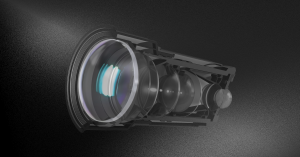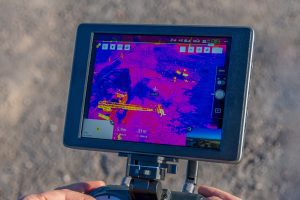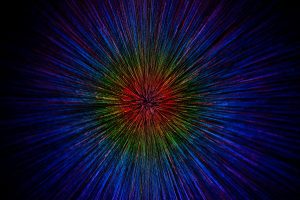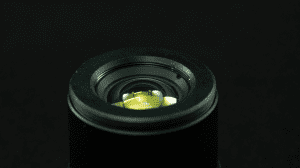Infrared Lenses (IR Lenses)
Avantier designs and manufactures custom infrared (IR) lenses for advanced applications in
- Manufacturing
- Defense and security
- Scientific research
- Medical diagnostics
IR lenses operate beyond the visible light spectrum, capturing and focusing infrared radiation to enable high-precision thermal imaging and detection.
Key IR Lens Types
We offer optical systems across the full infrared spectrum, including:
Each lens type is optimized for its target wavelength range and application.
Factory Standard (Manufacturing Capability)
| SWIR lens | MWIR lens | LWIR lens | NIR lens | |
|---|---|---|---|---|
| Wavelength | 0.9 um-2.5 um | 3 um-5 um | 8 um-12 um | 0.9 um-1.5 um |
| Focal length | 25 mm | 50 mm | 6 mm | 25 mm |
| F/# | 2.5 | 0.94 | 1 | 2 |
| Sensor | 2/3″ | 2/3″ | 1″ | 2/3″ |
| FOV | 25° | 13° | 128° | 25° |
Custom IR Lens Options
Avantier specializes in fully customized IR lens systems, from prototyping to volume production.
- Custom Specifications: Tailored to meet your exact performance metrics, from resolution to spectral response.
- Lens Types
- Aspherical lenses
- Spherical lenses
- Cylindrical lenses
- Custom geometries and assemblies
- Precision Optical Design: Our engineers use advanced simulation software to optimize for:
- Thermal stability
- Low distortion
- Aberration correction
- High transmission efficiency
- Material Selection Guidance: Based on your target infrared band and operating environment, we select optimal substrates to ensure durability and performance.
- Custom Coatings: We offer anti-reflection (AR) coatings tailored to the target spectral range:
- Visible
- NIR
- SWIR
- MWIR
- LWIR
- Coatings improve optical transmission, minimize reflection losses, and provide environmental protection.
- Advanced Manufacturing: Using high-precision processes like diamond turning, CNC machining, and precision molding, we deliver IR optics with exceptional surface quality and dimensional accuracy.
Material Selection
- Germanium (Ge)
- Zinc Selenide (ZnSe)
- Chalcogenide glass
- Zinc Sulfide (ZnS)
- Silicon (Si)
- Sapphire (Al₂O₃)
- Calcium Fluoride (CaF₂)
- Cadmium Telluride (CdTe) – as needed for specialized applications
| Refractive index | Transmission spectrum | |
| CaF2 | 1.414@3.5 μm | 0.23-9.7 μm |
| Ge | 4.033@3.5 μm | 2-15 μm |
| Chalcogenide | 2.0~3.0@10μm | 0.6-20 μm |
| CdTe | 2.677@8.0 μm | 6-22 μm |
| Sapphire | 1.695@3.5 μm | 0.2-5.5 μm |
| Si | 3.428@3.5 μm | 1.36-11 μm |
| ZnSe | 2.417@8 μm | 0.55-18 μm |
| ZnS | 2.223@8 μm | 0.42-18 μm |
Technical Resources
How Does an Infrared Lens Work?
- Capturing infrared radiation emitted or reflected by objects in the environment
- Focusing this radiation onto a specialized IR sensor within the camera system
Key Functional Aspects:
- Material transparency: IR lenses are made from materials like germanium or zinc selenide, which are transparent to IR wavelengths but opaque to visible light.
- Wavelength range: Typical operating ranges begin at 700 nm (near-infrared) and extend into the long-wave IR (up to ~14 µm), depending on application.
- Design differences: Unlike standard optical lenses, IR lenses are optimized for minimized chromatic aberration, thermal stability, and high transmission in specific IR bands.

Structure of Lens
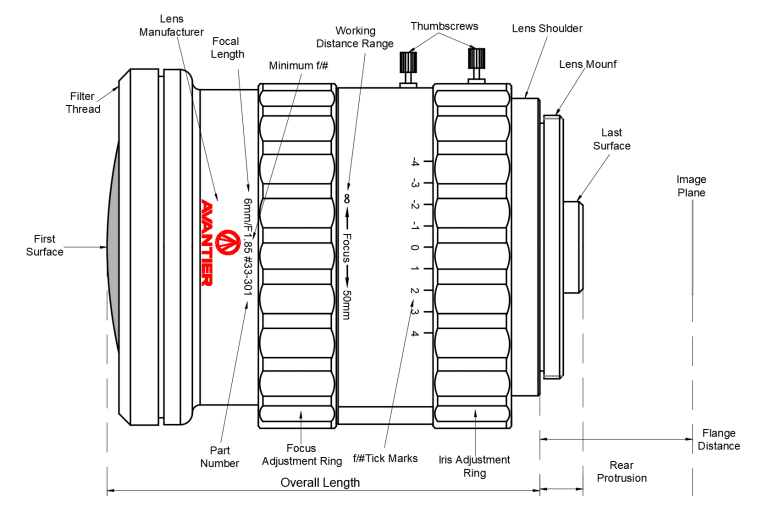
- Focus Adjustment Ring: Changes the focal distance (working distance) between the lens and the object.
- Iris/Aperture Ring: Adjusts the F-number (f/#) to control light intake and image quality.
- Thumbscrews: Lock settings in place to prevent accidental shifts.
- Lens Information: Printed on the barrel—includes focal length, minimum f/#, and model number.
- Working Distance Range: Indicates the focusing range of the lens.
- f/# Tick Marks: Help set the aperture precisely.
- Filter Thread: Mounting point for filters; adapters may be needed for wide-angle lenses.
- Camera Mount: Connects the lens to a camera (e.g., C-Mount, F-Mount, TFL-Mount).
- Rear Protrusion: Portion that extends into the camera—must avoid sensor or filter interference.
- First and Last Optical Surfaces: Define working distance and optical path.
- Lens Shoulder & Flange Distance: Ensure proper mounting alignment and sensor positioning.
- Image Plane: Where the lens focuses light—typically the camera sensor.
Cooled vs. Uncooled Infrared Detectors
Cooled IR Detectors
- Used in: MWIR and LWIR imaging
- Cooling Required: Yes (often liquid nitrogen)
- Advantages:
- High sensitivity and image resolution
- Long detection range
- Applications: Aerospace, defense, high-end scientific imaging
Uncooled IR Detectors
- Used in: Mostly LWIR imaging
- Cooling Required: No
- Advantages:
- Compact, cost-effective
- Operates at room temperature
- Disadvantages: Lower sensitivity and slower response
- Applications: Civilian use, building inspection, automotive systems
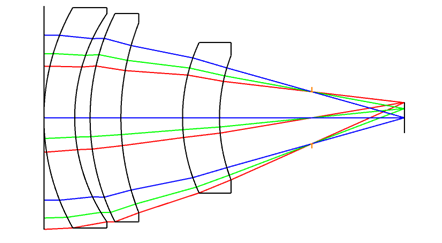
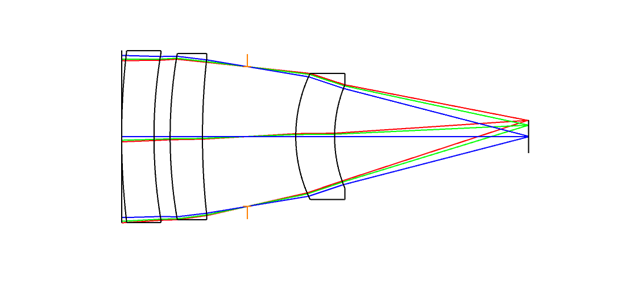
Types of Infrared Lenses (IR Lenses)
Short-Wave Infrared (SWIR) Lenses
- Wavelength: 800–1700 nm
- Key Features:
- Works with reflected IR light
- High-resolution imaging
- Performs well in low-visibility environments (e.g., smoke)
- Applications:
- Semiconductor inspection
- Anti-counterfeiting
- Medical diagnostics
- Quality control and machine vision
Medium-Wave Infrared (MWIR) Lenses
- Wavelength: 3000–5000 nm (3–5 μm)
- Key Features:
- Captures emitted thermal radiation from hot objects
- Requires cooled detectors
- Higher resolution than LWIR
- Applications:
- Fire detection
- Engine diagnostics
- Military target acquisition
- Long-distance surveillance
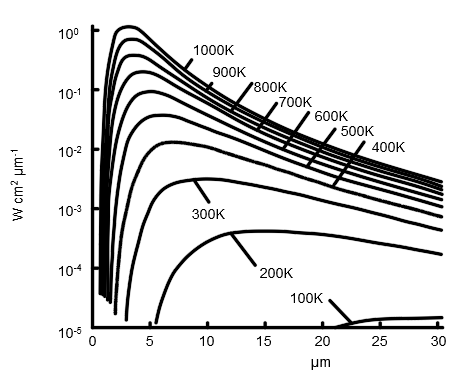
Applications of Infrared Lenses
Medical Instrumentation
Infrared lenses are widely used in thermal imaging and non-invasive diagnostics. Equipped with MWIR or LWIR lenses, infrared thermal cameras can detect subtle surface temperature variations on the skin—useful in identifying:- Inflammation
- Circulatory issues
- Cancerous growths
- Endoscopic systems
Life Sciences
In life sciences and pharmaceutical research, infrared lenses enable precise NIR light focusing for:- Near-infrared (NIR) spectroscopy
- Chemical composition analysis
- Food quality inspection
Surveillance & Security
Infrared lenses play a pivotal role in night vision and thermal imaging surveillance.- SWIR lenses enhance visibility in low-light or obscured environments (smoke, fog, darkness).
- LWIR lenses are widely used in thermal cameras to detect intruders and monitor infrastructure in all weather conditions.
- Border security
- Critical infrastructure monitoring
- Law enforcement and crowd control
Aerospace & Defense
Defense systems rely heavily on MWIR and LWIR lenses for:- Long-range surveillance
- Target acquisition and tracking
- Navigation in low-visibility conditions
- SWIR imaging also supports target recognition and identification, especially in harsh or camouflaged environments.
Industry Use Cases at a Glance
Application Area | Typical Infrared Lens Types | Use Cases |
Life Sciences | NIR, SWIR | Spectroscopy, chemical imaging |
Security & Surveillance | SWIR, LWIR | Night vision, perimeter monitoring |
Medical | MWIR, LWIR | Thermography, diagnostics, endoscopy |
Aerospace & Defense | MWIR, LWIR, SWIR | Reconnaissance, threat detection |
Future Trends and Technologies
Enhanced Performance
Advances in optical materials and coatings will lead to:- Higher IR transmission efficiency
- Lower aberrations and distortion
- Improved resolution and clarity
Miniaturization
With increasing demand for compact devices, IR lenses are being designed for:- Wearable medical monitors
- Lightweight UAV and drone systems
- Portable inspection tools
Multi-Spectral Imaging
Next-gen IR lenses may combine multiple wavelength bands (e.g., SWIR + MWIR), enabling:- Simultaneous data capture across the IR spectrum
- Advanced imaging for agriculture, environment, and security
AI & Machine Learning Integration
When paired with AI-powered imaging systems, IR lenses can support:- Real-time threat recognition
- Automated quality control
- Predictive maintenance in industrial settings
Emerging Applications
As infrared imaging becomes more accessible, new use cases are emerging in:- Smart agriculture
- Energy efficiency and HVAC diagnostics
- Waste sorting and recycling
In Summary
Infrared lenses are advancing rapidly—enabling smarter, faster, and more accurate imaging across critical sectors. Whether it’s improving patient care, enhancing national security, or enabling better environmental analysis, IR lenses will remain at the forefront of innovation.
Related Content
WE CAN HELP YOU!
Contact us NOW for sales & expert advice.






